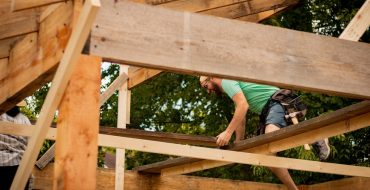
Lumber prices have risen 50% since August, and 2 experts say the resurgence will continue through early 2022 (Business Insider)

Carolyn Cole/Getty Images
- The price of lumber has seen a resurgence, which analysts expect will continue through early 2022.
- A reason for the price increase in lumber is another wave of renovation demand, an analyst told Insider.
- The analyst doesn’t expect lumber prices to roar back to their pandemic highs.
- Sign up here for our daily newsletter, 10 Things Before the Opening Bell.
One of the pandemic’s hottest commodities is staging a comeback, rising 50% since August and gaining for the sixth consecutive week.
The price of lumber – after steadily declining since its all-time high in May – is expected to continue to tick higher through early next year, experts told Insider.
Lumber futures as of October 8 were hovering around $713 per thousand board feet – still 58% lower than the record high of $1,711 achieved in May as supply chain disruptions and demand for housing drove an incredible boom for the commodity. A year ago, the lumber futures were trading at roughly $586 per thousand board feet.
But after prices bottomed out below $400 per thousand board feet in late August, they have since recovered by $100 per thousand board feet in just over a month, data from Fastmarkets Random Lengths Framing Lumber Composite Price showed.
A reason for the price increase in lumber is a modest increase in renovation demand after price-sensitive buyers proceeded with home improvement projects now that wood prices have seen a substantial correction, Dustin Jalbert, senior economist at Fastmarkets, told Insider.
Though Jalbert does not expect the kind of runup in lumber prices seen earlier this year – a period when there was a backlog of homes waiting to be built and a shortage of key construction supplies – as pandemic-related supply constraints continued to ease.
“The market has finally transitioned to a more balanced state compared with being severely oversupplied in the summer months, which ultimately drove the massive correction in prices from record-high levels set in May,” Jalbert told Insider.
And even if Americans wanted to build and renovate homes, the field consumption of lumber is being bogged down by shortages of other complementary materials such as windows, siding, cabinet appliances, and garage doors, he added.
The supply side, meanwhile, continues to face challenges, Jalbert said. Log costs in British Columbia, which accounts for about 16% of North American lumber capacity, remain elevated.
Tariffs on Canadian lumber will also likely double from 9% to about 18% by November, pending the Department of Commerce’s final determination, he noted. Such an outcome will raise production costs on lumber shipments to the US market, which will ultimately put further upward pressure on lumber prices, Jalbert added.
Chip Setzer, director of trading and growth for Mickey Group, a commodity trading platform, also does not see lumber prices skyrocketing, not even past $1,000 per thousand board feet, he told Insider. While prices are historically elevated, he said the range lumber prices are currently in now is a fair valuation.
“I like that number,” he said, adding that the price floor of the commodity may have permanently moved higher compared to the roughly $300 per thousand board feet pre-pandemic. “It’s good for the forest. It’s good for the guys who work in the sawmill … It’s good across the board.”
Setzer also said that while the market may see some slowdown into year-end, it will also see an uptick by the second quarter of next year. “People are still under-housed,” he said.
Lumber prices at the start of the year surged, along with energy prices, like oil and natural gas, and used car prices, pushing up inflation to 30-year highs. Demand across commodities has since cooled as consumers absorbed the sky-high prices and as the economy reopened.